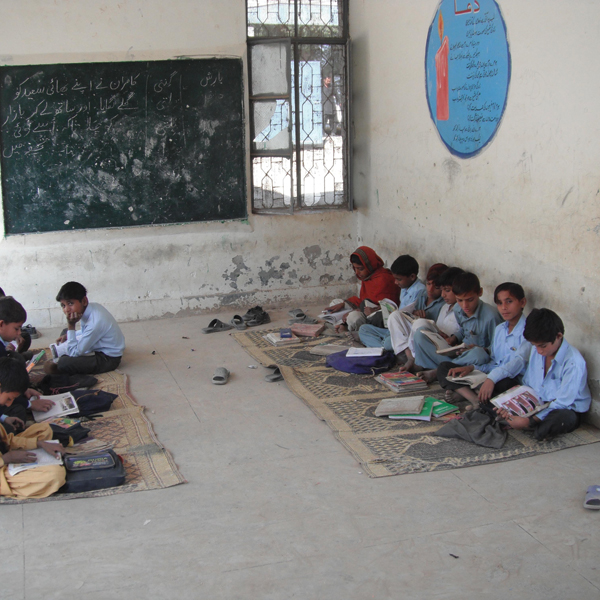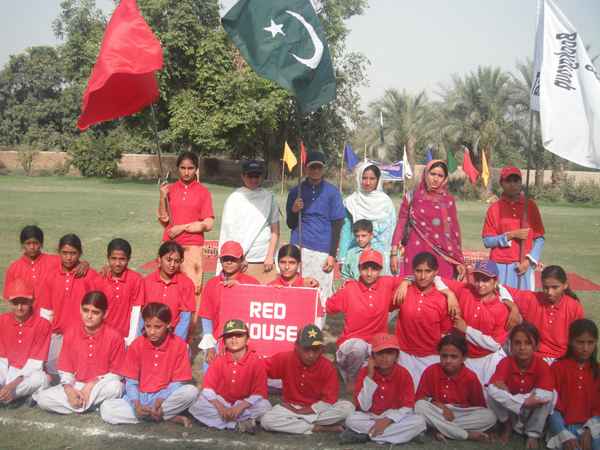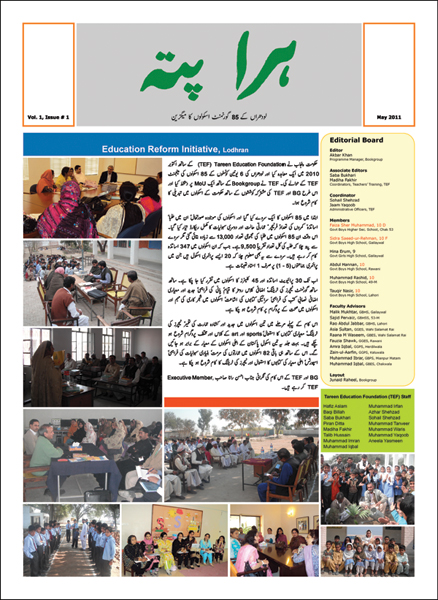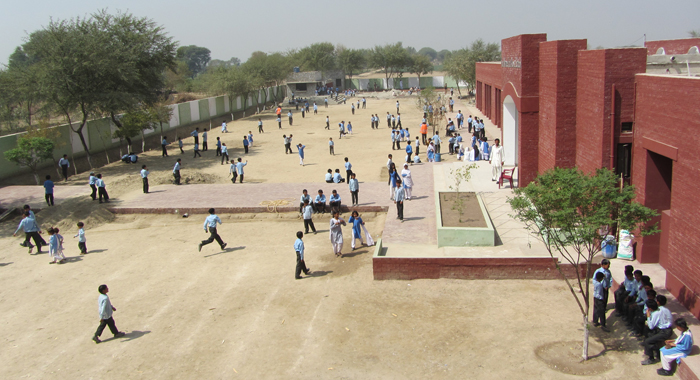
In the schools in Lodhran the work started by ‘Doing Simple Things’. The ‘doing simple things’ approach is premised on the argument that while resources are essential, often small and simple policy changes can change the learning culture of a school substantially, and impact on the lives of children dramatically.
In October 2010, several civil works were initiated and administrative and policy changes were made. A number of academic changes and a sustained programme for the training of teachers were introduced.
The incremental approach envisages a two-pronged strategy: One, to bring about academic and administrative changes in all the 85 schools at the same time. This includes providing to all schools alternative textbooks, training of teachers, introducing sports, art and other activities, hiring new teachers and building additional classrooms where needed, providing drinking water and improving toilets, establishing a code of conduct (eg, punctuality, no corporal punishment, taking care of personal hygiene), establishing Student Governments and starting horticultural societies. All these changes have already been implemented in the 85 schools.
Two, in phase 1, two schools have been identified as core schools: The Faiz Ahmed Faiz School, which has already been constructed and started funtioning in January 2012, and the Amna Girls School, which is under construction and will be operative by April 2013. These two schools serve as prototypes for the rest of the schools. These core state-of-the-art schools are comparable with some of the best in the private sector. Each year a large state-of-the-art school will be added to the Lodhran Schools Reform Initiative.
Bookgroup books have been introduced from KG to Class 8 in most of the 85 schools for teaching of Urdu. Heinemann Maths for teaching of mathematics has been introduced in classes 1 to 2. Each year a new class is added for teaching of Heinemann maths, so that teachers are trained in teaching a modern maths programme. Books from Oxford University Press have been introduced for teaching of English. All books have been supplied free of cost to students by the TEF.
Six books have been translated from Urdu into the local Seraiki language by the Bookgroup. When these Seraiki books were distributed to the children, the teachers, students and their parents were taken by quite a storm. For the first time, a very small beginning had been made to provide children delightful books written in their native language. The Bookgroup will continue to translate more books into Seraiki for children each year.

During their stay in Karachi, under-training teachers from Lodhran also visit the Neemtree School of Music where they observe how music, starting with very small children, is taught as an integral component of education. These teachers also visit the Moin Khan Academy (DHA) where they are exposed to various sports taught by professional instructors.
In the process of being trained in the new methodology of teaching and in sharing the new, stimulating and child-friendly school culture, it is being demonstrated that a large majority of government school teachers, given the right environment and the right training, understand the dynamics of modern pedagogy and are willing to improve their professional skills.


Of the core schools, the new building of the Faiz Ahmad Faiz Boys School (17-18 MPR) was completed in December 2011 and the following January classes resumed in this state-of-the-art building with a modern progamme of studies. Construction work on the 44,000 sq. ft. Amna Girls School (21 MPR) started in October 2011. This large facility is expected to house 800 students when completed in April 2013. Both these core schools have the following facilities:

Fill in the form and submit
© 2023 BookGroup All Rights Reserved. | Web Design by UMW Media